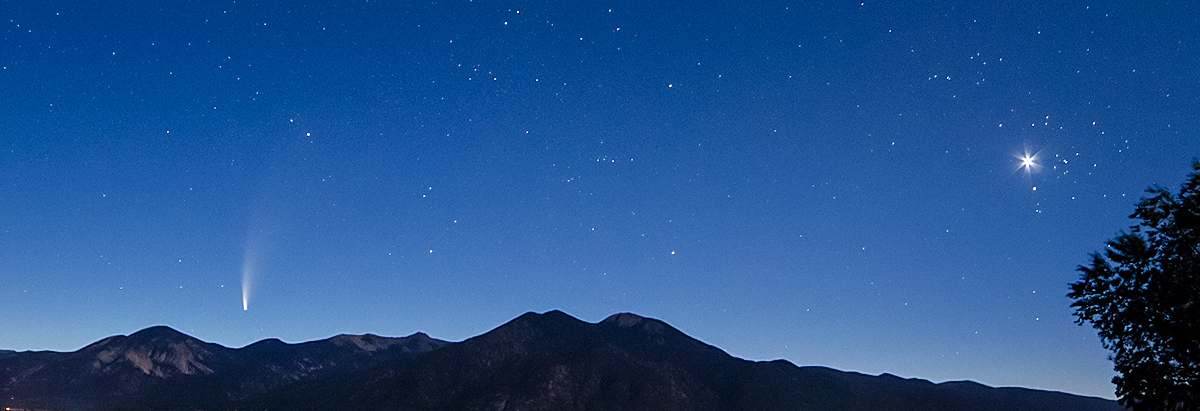
Welcome to taosastronomer.com!
offering
local "hands-on" observing
(visual and imaging) sessions and instruction
viewing and imaging from Rabbit Valley Observatory
a dark sky location on the mesa just west of Taos, NM
Image obtained November 23-24, 2016 through RVO's Megrez 80mm refractor with Orion field-flattener lens, using a Baader-modified Canon XSi DSLR and BackyardEOS image-acquisition software – 30 of 35 carefully selected and stacked 180-second luminance frames combined with multiple dark, flat and bias calibration frames shot at ISO 1600 and totaling more than 210 minutes (90 minutes effective luminance) were used to create this image; optics driven by the Losmandy G-11 mount equipped with Ovision's precision RA worm gear, guided with a ZWO ASI 120MM Monochrome CCD camera through a 60mm guidescope using PhD2 guiding software and post-processed with DeepSkyStacker and Photoshop CS3 s/w. Note: these objects were quite difficult to photograph from my location in New Mexico due to their very southerly location (25 degrees below the celestial equator) at mid-northern latitudes. From southern latitudes, the NGC253 Sculptor Galaxy is one of the brightest, most spectacular objects in the sky, and is sometimes visible to the naked eye under very dark-sky conditions.. The objects both would have likely found their way into Charles Messier's famous catalogue, but due to his northerly observing location (near Paris) he did not note them in his ubiquitous list. Their discovery, therefore, was left to William Herschel's sister Caroline in 1783, who observed alongside William and took valuable locational notes as they scanned the sky with a variety of unique instruments. They are generally considered the most prolific and accurate visual astronomical observers of all time. "About half a century later, John (William) Herschel (son of William Herschel) observed it using his 18-inch metallic mirror reflector at the Cape of Good Hope. He wrote 'very bright and large (24′ in length); a superb object.... Its light is somewhat streaky, but I see no stars in it except 4 large and one very small one, and these seem not to belong to it, there being many near.' Of course, this was before the 20th century realization that galaxies were separate and distant "island universes," not close-by nebulae as was previously believed. The globular cluster pictured (NGC288) is within our own "island universe," the Milky Way; therefore this object is far, far in the foreground.
[copyright Rabbit Valley Observatory/Willis Greiner, 2016 -- all rights reserved] |
(all content copyright 2015-2019 Willis Greiner Photography, all rights reserved)